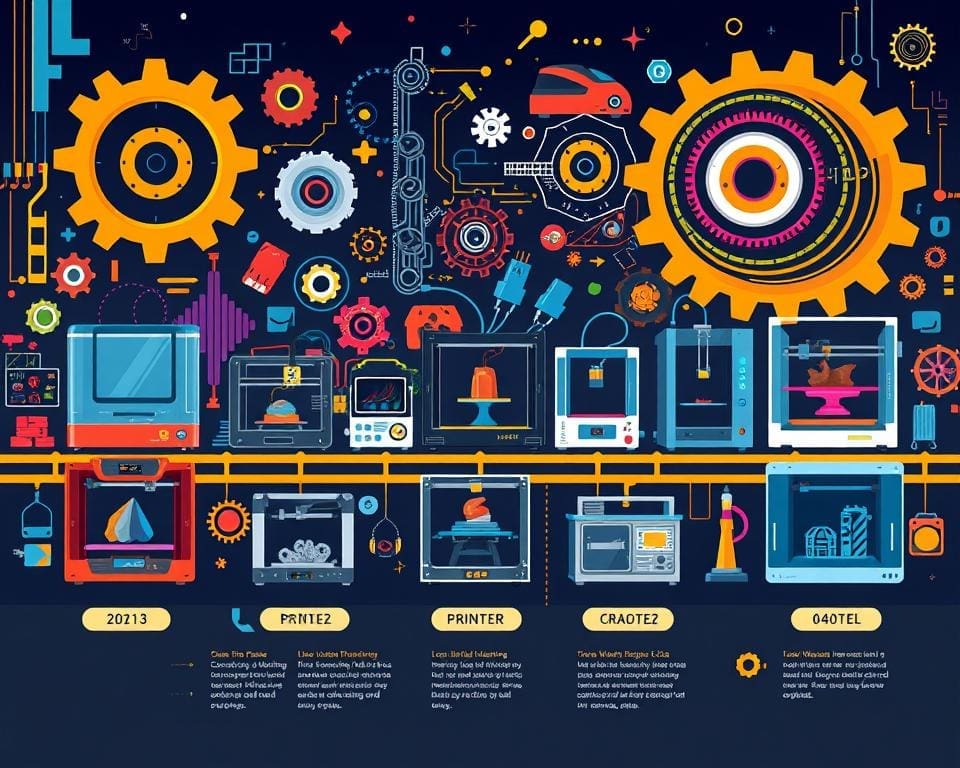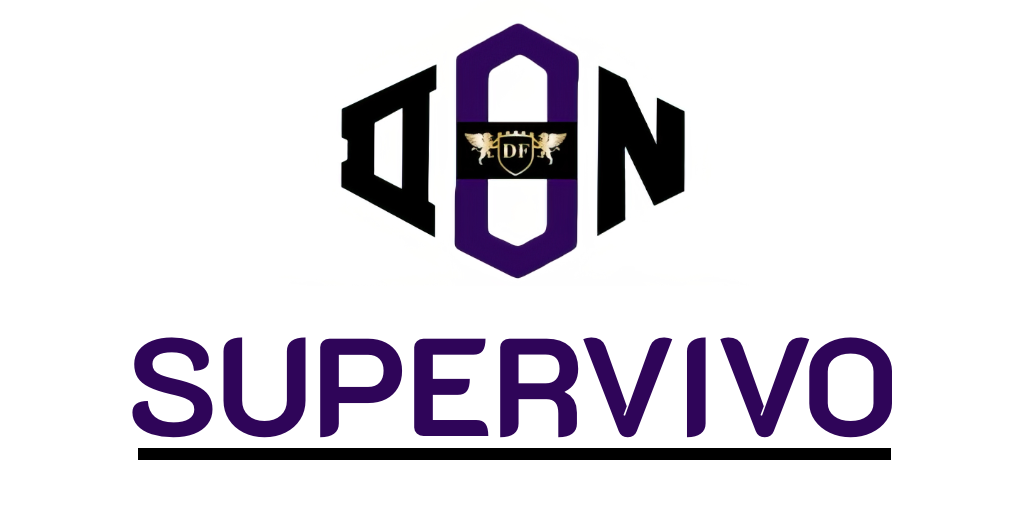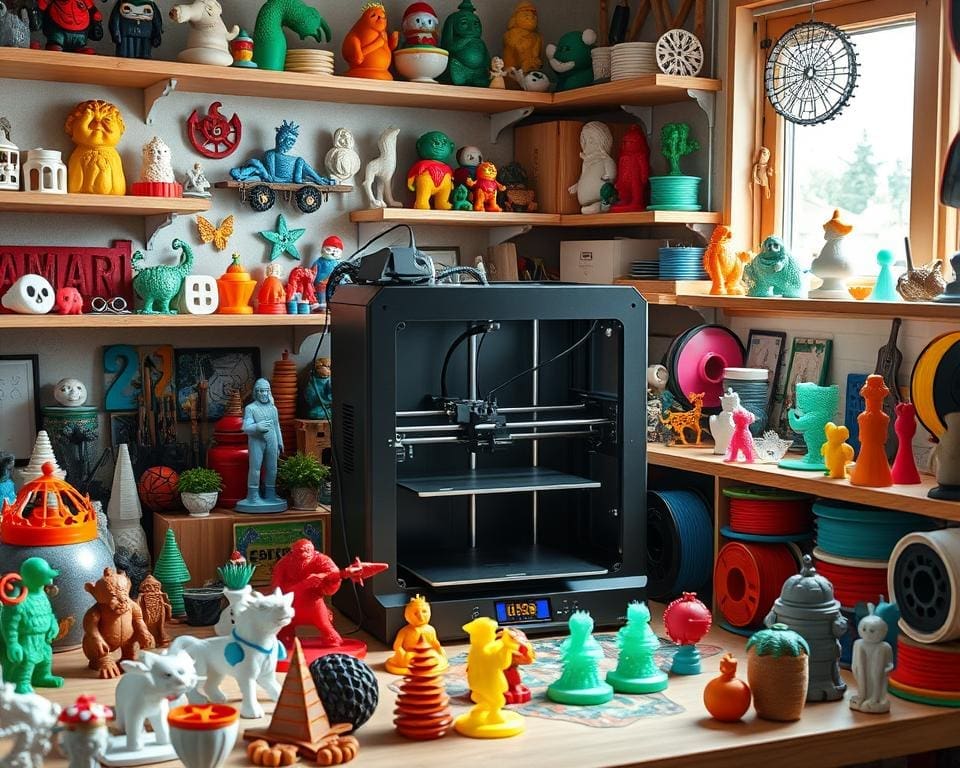In today’s rapidly evolving landscape, 3D printers are making a substantial impact on daily life, not just as manufacturing tools, but as catalysts for creativity and innovation. The transformative power of additive manufacturing is fostering a new era where individuals and industries are empowered to craft custom solutions tailored to specific needs. From hobbyists creating unique home projects to professionals devising intricate prototypes, the capabilities of 3D printers are reshaping our approach to problem-solving and design.
Recent studies indicate that the effective incorporation of 3D printing is poised to enhance productivity and sustainability in various environments. With this innovative technology, the line between concept and creation is becoming increasingly blurred, enabling a more personalised and adaptive way of living. As we delve deeper into the role of 3D printers and their daily life impact, it becomes clear that we are just beginning to scratch the surface of their potential.
The Evolution of 3D Printing Technology
The journey of 3D printing technology is a fascinating tale of innovation and creativity. Originating in the early 1980s, this revolutionary approach known as additive manufacturing has undergone significant improvements over the decades. Each milestone represents a leap forward in capabilities and applications, redefining how objects are created.
Milestones in Additive Manufacturing
Key points in the timeline of 3D printing include:
- The creation of the first 3D-printed object by Chuck Hull in 1983, marking the dawn of a new era in manufacturing.
- The introduction of various techniques such as SLS (Selective Laser Sintering) and FDM (Fused Deposition Modelling), which expanded the boundaries of what could be achieved with this technology.
- The emergence of desktop 3D printers in the 2000s, making this technology accessible to individuals and small businesses.
Key Technological Advancements
Recent technological advancements have transformed additive manufacturing into a powerhouse of efficiency and creativity:
- Faster print speeds allow for quicker production times, enhancing productivity across industries.
- Higher precision in printing enables intricate designs that were once thought impossible.
- The development of innovative materials such as bio-plastics and metal alloys opens up new possibilities for applications in various sectors.
These advancements highlight the increasing relevance of 3D printing technology in today’s world. As it continues to evolve, the potential applications expand, driving innovation in countless fields.

3D Printers: How They Are Changing Daily Life
The accessibility of 3D printers has brought a revolutionary change to personal projects for many individuals. By allowing users to create items tailored specifically to their needs, these machines significantly enhance the daily life impact of technology. Now, anyone can transform their ideas into tangible products without the constraints of traditional production methods.
Impact on Home and Personal Projects
With the rise of affordable 3D printers, individuals are discovering new opportunities to engage in custom manufacturing. This capability means people can produce everything from specialised tools to unique decorations for their homes. Enthusiasts of DIY projects can save money on items they would typically purchase, while stimulating their creativity. Home users enjoy crafting:
- Unique toys for children
- Custom planters for gardening
- Specialised cooking utensils
This shift fosters a sense of accomplishment as users witness their designs come to life, enhancing their daily routines and personal spaces in ways previously unimaginable.
Enhancing Creative Expression and Customisation
3D printing uplifts artists and designers by offering new avenues for creative expression. The ability to render complex designs at home leads to more personalised products, resulting in a booming market for bespoke items. Popular applications include:
- Custom phone cases that reflect personal style
- Unique jewellery pieces that celebrate individuality
- Artistic home décor items tailored to specific aesthetics
Through 3D printers, individuals can explore their creativity while fully engaging in the custom manufacturing process. This engagement reshapes consumer experiences, making them more meaningful and connected to personal expression.
Transforming Industries with 3D Printing
3D Printing has emerged as a transformative technology, reshaping a variety of industries through its diverse applications. From groundbreaking advancements in healthcare to custom solutions in automotive and aerospace, the influence of 3D printing is profound. This remarkable approach enables companies to implement innovative applications while optimising production processes.
Innovative Applications in Healthcare
The healthcare sector has significantly benefited from 3D printing through the development of personalised medical devices and prosthetics. These custom manufacturing techniques allow for products tailored to individual patient needs, fostering enhanced recovery experiences. Additionally, 3D-printed biocompatible materials lead to the creation of customised implants, dramatically improving patient outcomes.
Custom Manufacturing in Automotive and Aerospace
Within the automotive and aerospace industries, 3D printing has revolutionised the manufacturing process. By adopting custom manufacturing practices, companies can produce intricate components with reduced lead times and costs. This innovation paves the way for faster design iterations, enabling engineers to create bespoke parts that meet unique performance requirements.
Rapid Prototyping for Product Development
Rapid prototyping stands out as one of the most valuable advantages of 3D printing. Firms can quickly develop prototypes, allowing for immediate testing and modifications. This rapid feedback mechanism accelerates the product development cycle, ensuring that designs meet functional specifications without excessive delays. As a result, businesses keep pace with market demands through effective and efficient product innovation.
Environmental Benefits of 3D Printing
As the world shifts towards more sustainable practices, the role of 3D printing becomes increasingly significant. This innovative technology not only allows for creative expression but also provides substantial Environmental Benefits. By utilising sustainable materials and implementing waste-reducing methodologies, businesses can take a proactive stance in combating climate change.
Sustainable Materials and Practices
In the realm of 3D printing, the use of sustainable materials such as recycled plastics and biodegradable composites is gaining traction. These materials contribute to a circular economy by reducing reliance on virgin resources. Industries are embracing such practices as an integral part of their operations, reinforcing sustainability goals. Additionally, the process itself facilitates the creation of complex designs that traditional manufacturing cannot easily achieve, ultimately minimising the ecological footprint.
Reducing Waste through Additive Manufacturing
The concept of reducing waste is central to the advantages of additive manufacturing. Unlike traditional subtractive methods that cut away material, 3D printing builds objects layer by layer, which dramatically decreases excess material use. Companies like Adidas have pioneered efforts using 3D printing technology to create footwear with minimal waste, illustrating a commitment to environmental consciousness. Such innovations not only cut down on production waste but also optimise energy consumption, marking a shift towards more responsible manufacturing practices.
The Future of 3D Printing in Daily Life
The landscape of 3D printing is evolving rapidly, signalling a transformative phase in its influence on daily life. Experts project that advances in bioprinting, particularly in the fields of personalised medicine and tissue engineering, may soon become commonplace. This capability could dramatically influence healthcare accessibility and treatment options, fundamentally reshaping our understanding of medical solutions.
Moreover, the potential for home-based manufacturing through 3D printers heralds a new era of convenience and creativity. As this technology becomes increasingly mainstream, individuals can expect to create customised products at home, reducing reliance on traditional retail channels. This shift is not merely about convenience; it embodies a shift towards a more personalised consumer experience, allowing creativity to flourish in everyday tasks.
Integrating 3D printers with smart technology is another exciting prospect for the future of technology. As connectivity and intelligence are embedded into these devices, they will facilitate seamless production processes and enable smarter resource management. The implications for education, product conception, and industrial operations are profound, promising a future where innovative solutions are the norm, greatly enhancing our daily life impact.









